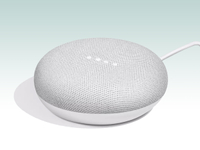My First Week with Google Home Mini: More Frustrating Than Fun
Google's tiny smart speaker has some neat capabilities, but it's smart home powers need more polish, and I just want it to do more.
My experience and feelings about voice assistants are pretty mixed. I've asked Siri lots of questions over the years, but its reliability is so shoddy that I largely ignore its existence. I'm not an Amazon lover or Prime member either, so Alexa and its devices were never of much interest to me.
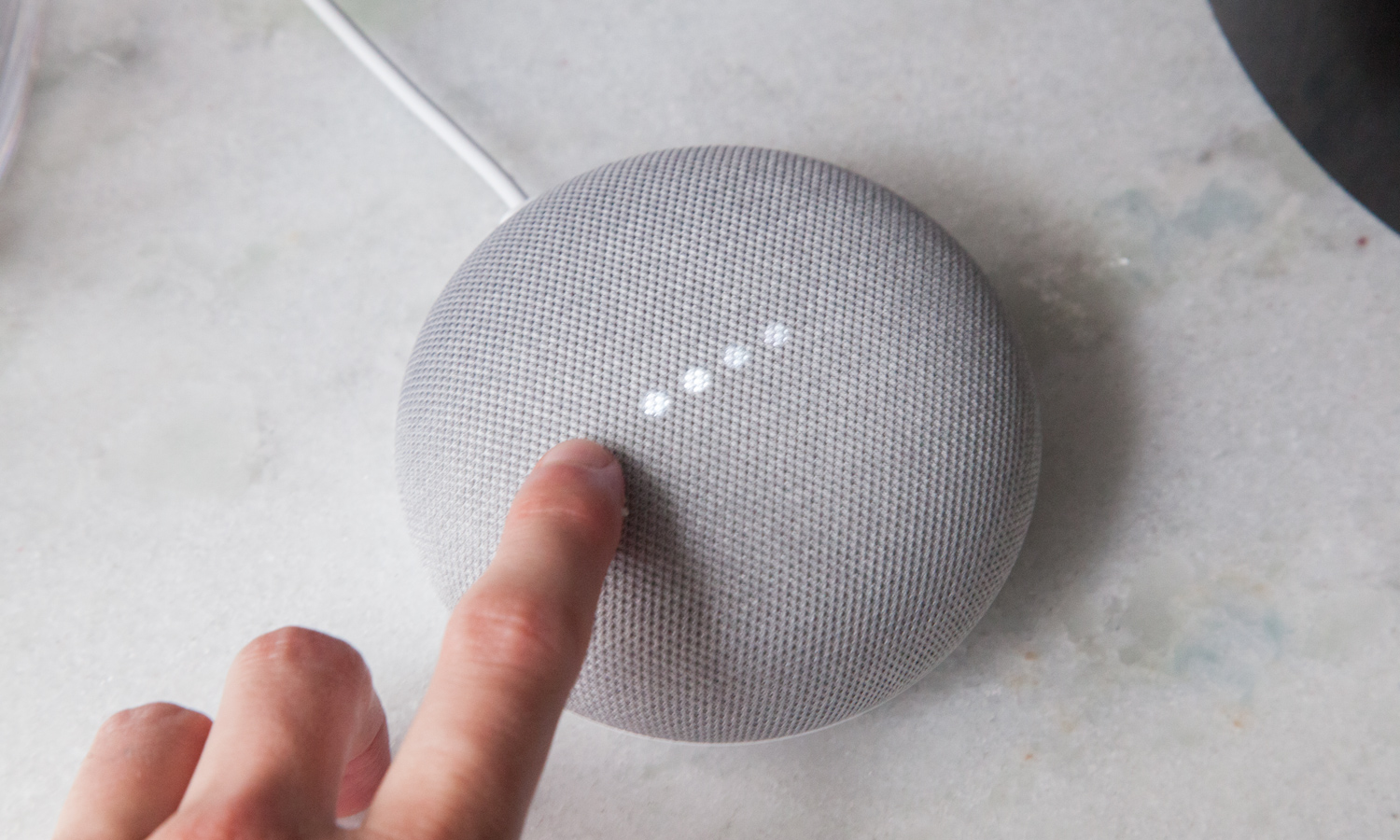
However, the promise of doughnuts — with a free Google Home Mini — was enough to get me to wait on line at one of the company's promotional Donut Shop pop-up stores. At $49, the Home Mini is impulse-buy cheap, but I needed an even sweeter price to consider building out a smarter home.
After spending a week with Google Home Mini, here are my impressions.
It sits where it won't worry anyone
I set my charcoal-grey Home Mini up on the dresser next to my bed because my roommates don't feel comfortable with the speaker in a common space. I can't blame them, as the Home Mini already hit its first privacy controversy, for constantly eavesdropping. That pushed Google to disable the ability to activate the Mini by tapping its top.
When I asked Google Home Mini how my day looked, the thing just wouldn't shut up.
But as I plugged in the Mini's power cord, I laughed at its mute switch, the toggle that disables its microphone. Why did Google put this thing on the backside of the puck, near the power cord? That's the most inconvenient place you could put it, aside from under the device.
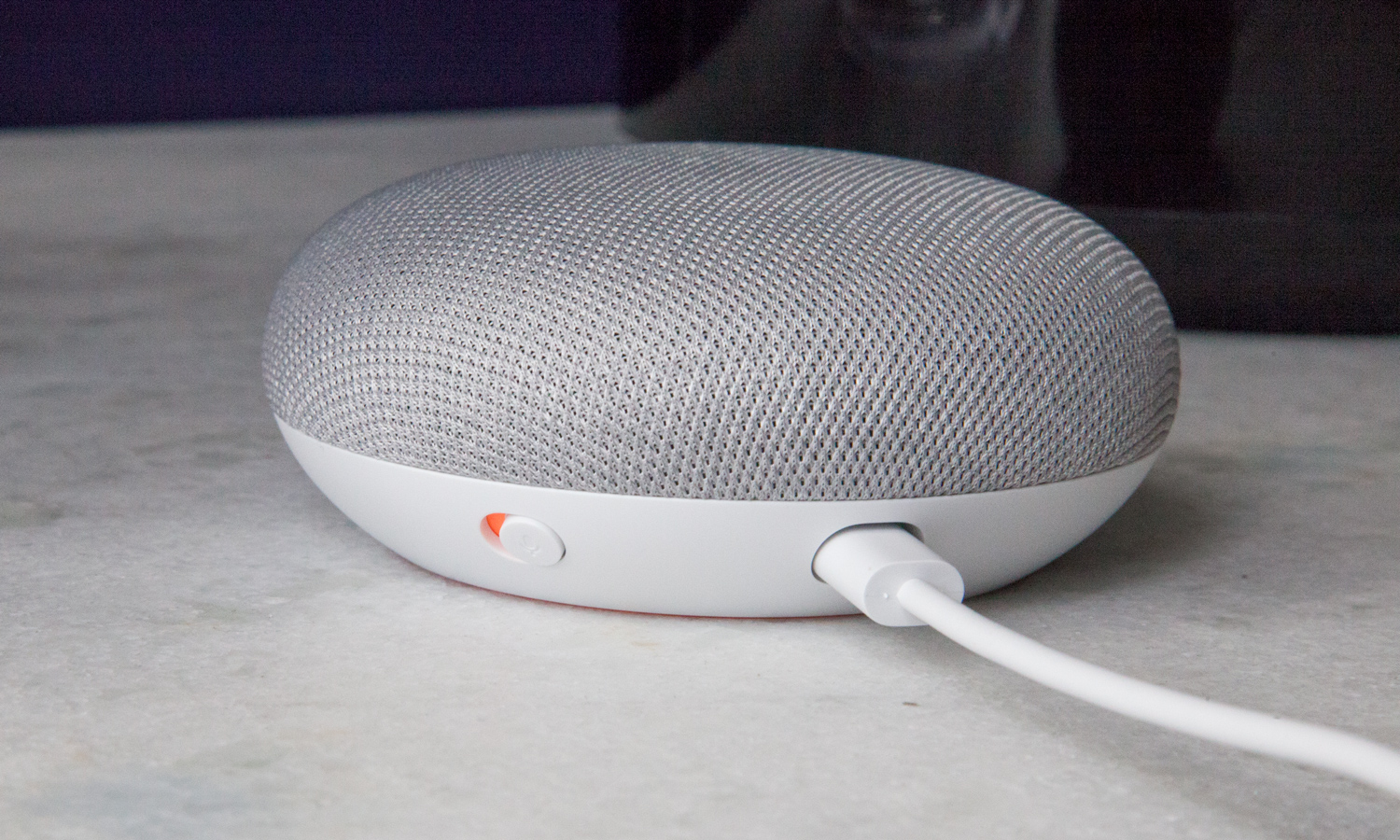
In my first week, I didn't once make the effort to toggle this privacy switch, and I doubt that I — or anyone else — will. It feels purely like window dressing to assuage privacy-minded users, as I'd guess that most Google users who would use a smart speaker have already accepted that the search giant will know everything about them.
Talking to Home Mini
The thought of spending my day talking to a disembodied voice was a large part of why I waited this long to try out a smart speaker. So, when I followed one of the prompts that came with the speaker, to ask Google how my day looks, I recoiled at its response.
The thing just wouldn't shut up, rattling off my local forecast, my first appointment and even playing the news from NPR. I would have heard even more if I had reminders or upcoming flights in my Google calendar, or had I asked on a workday when it could tell me about my commute. Fortunately, it gets this verbose only when you ask about your day, which I don't believe I will do again, as I'll instead just ask for specific things.
Even when I got the Home Mini to send a series of commands to the Harmony — wherein I just wanted it to turn on the USA Network — I saw mixed results.
Looking at the other commands that the Google Home app suggests to ask, I found some that would prove valuable — hands-free calling and asking for the news — and others that don't apply well to my life. While I understand that knowing traffic conditions is valuable to those with cars, I couldn't care less, as I rely on New York's subway-transit system. While the Mini also offers transit estimations, I've already memorized every route I use and didn't need to ask.
Yes, the speaker is a resource for an abundance of answers to trivia questions, but I'm still trained to type these things out by hand. It's not just about muscle memory either, because thanks to copy and paste and email, I can do more with that information if I look it up on my smartphone or laptop, using Google by hand.
My fledgling smart home
When I brought the Mini Home into my home, I realized how ill-prepared I was for this new member of the digital family. I've never owned a piece of smart home gear before, so I borrowed an iDevices Socket bulb and a Harmony Hub to test.
My first night spent with these devices was filled with the headaches of setting the gear up. I started with the Socket bulb, because I thought it would be simpler, but it wasn't.
For starters, I couldn't command Google to turn on the light, but the situation improved when I screwed the bulb in tighter — it was already pretty snug — which fixed the issue. Even more frustratingly, though, the Socket's colored night-light seems to be controlled only by Siri, and not Google Assistant. I did find one perk of the Socket light: It gave me the option to dim the bulb halfway, for when I didn't need as much brightness.
Things got worse when I tried to use the Harmony Hub, which supports the Google Assistant and my cable box and TV. Pairing everything and getting started was a breeze, but doing anything with it all made me want to punt the Hub off my fire escape, when I thought every command had to start with "Hey, Google, ask Harmony to …" which felt like doing twice the work.
I kept trying to train the Hub to turn both the TV and cable box on and move to a specific channel, but it wouldn't recognize my commands. Then, I realized that the Google Assistant lets you create shortcuts so you don't need to say, "ask Harmony," every time. And Harmony allows for something called Friendly commands for making sure your custom, multistep Activity commands have an easy spoken trigger.
Annoyingly, it seems the window for Friendly command setup is meant to be accessed only when originally pairing your device, as I had to unpair my Home Mini from my Harmony to get back to that window.
But even when I got the Home Mini to send a series of commands to the Harmony — wherein I just wanted it to turn on the USA Network — I saw mixed results. Sometimes it worked, and sometimes the Home Mini just spoke as if it were performing the commands, but I saw no results.
Multiple virtual DJs
The first questions I asked my Home Mini were about music, commanding the device to play songs from Google Music and Spotify. For its size and price ($50), the Google Mini produces decent-sounding audio, with enough bass and clarity to fill my bedroom without distortion.
Its ability to process natural language is respectable. When I said, "Hey, Google, play St. Vincent's latest song," it pulled up "Los Ageless," (the correct answer). When I asked the device to play Kanye West's best album — a trick question and something of an internet meme — it played a greatest hits album from Mr. West (though the answer is 808's & Heartbreak).
MORE: What's the Best Music Service for You?
I found another quirk while trying to call up the song "Keep It 100" by Grandtheft & Keys N Krates. Spotify, my original choice for the default player, refused to pull up the original version, instead playing a remix.
My favorite use of the Home Mini so far is to play the latest episodes of my favorite podcasts.
Interestingly enough, the Home Mini pulled up the right song when I said, "Play 'Keep It 100' from Google Play Music." And since that's a mouthful, I changed the default music app to Google Play Music.
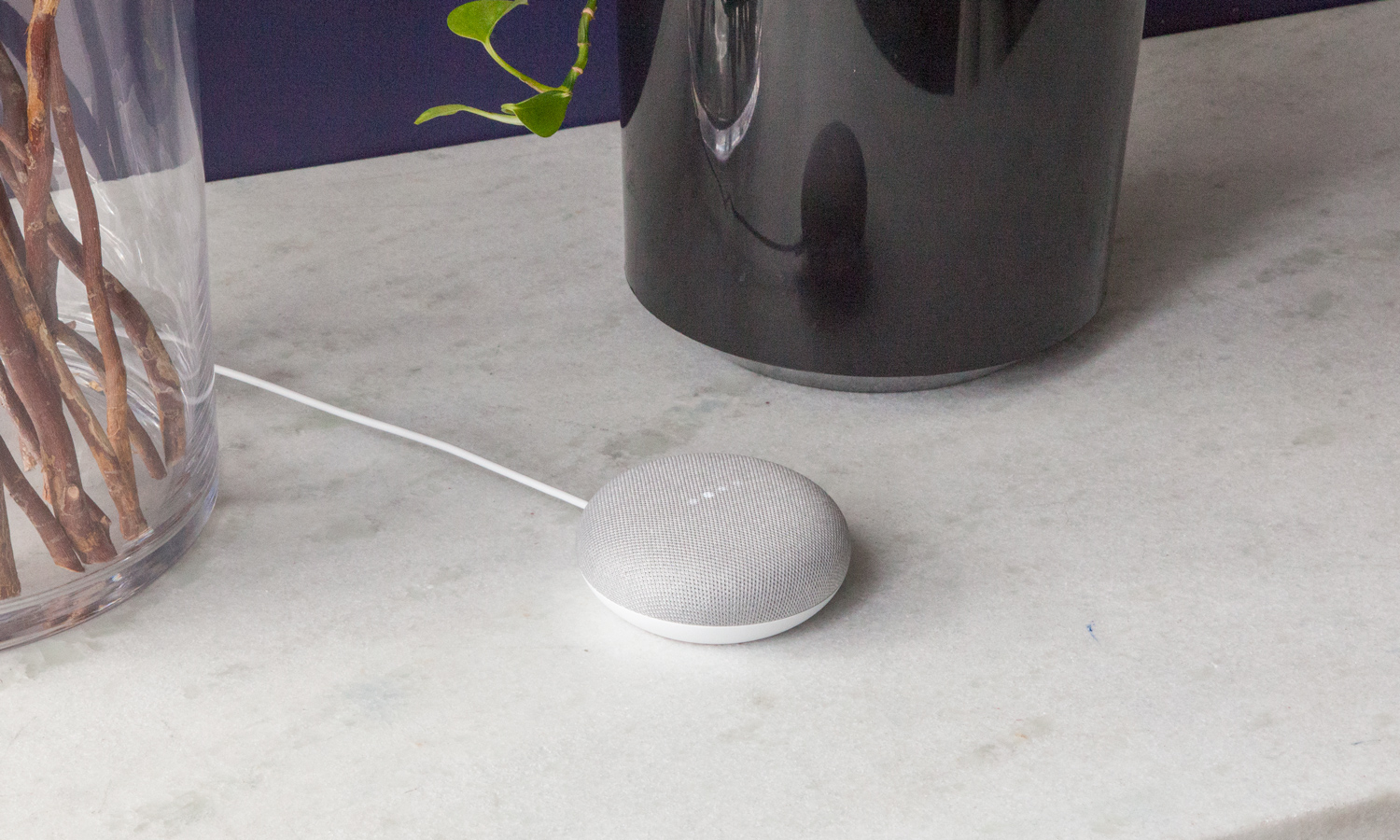
Also, Spotify played my Spotify Time Capsule playlist (which it generates for every user) only when I asked for it by its official name, "Your Time Capsule playlist," and not by "My Time Capsule playlist."
My favorite use of the Home Mini so far, though, is to play the latest episodes of my favorite podcasts. The device speedily streamed the latest episodes of Desus & Mero's Bodega Boys show and David Shoemaker's The Masked Man podcast. While I had trouble getting the Google Mini to load other shows, such as Not Your Demographic, that issue fixed itself once I simply added "podcast" to the end of my "play the latest episode of ..." request.
Features that need to grow
While I was excited to ask my Google Home Mini to help me find my iPhone, I found out that this feature doesn't work as perfectly as I wanted. Sure, you can have the speaker send a ringtone to an iPhone — to show you that you yet again lost your handset in the sofa — you don't hear anything if the phone's on silent.
I found another mixed blessing in the Google Home Mini's alarm-clock tool, which was easy to set up, which I did by simply saying, "Set an alarm for 5:55 a.m. on Monday through Friday." And while this alarm did the job of waking me up for work, I hit a wall when asking it to change the alarm tone. I wanted to use a unique song, and not some generic melody, which Google Home Mini told me it cannot do.
The alarm clock dipped in its value during my testing, as Google disabled the tap-to-stop function. Google had kept that function even in the first days after the company disabled the top sensor's other functionality.
Outlook
As I waited at the Home Mini Donut Shop, I thought about how clever it is for Google to point out how this smart speaker is shaped like a doughnut. By highlighting the device's tiny size and comparing it to one of America's most beloved baked goods, Google may convince this sweets-loving country not to view the always-listening puck as a creepy proposition. Also, while I — and many others — pay for doughnuts all the time, I've never thought about dropping dough on a smart speaker.
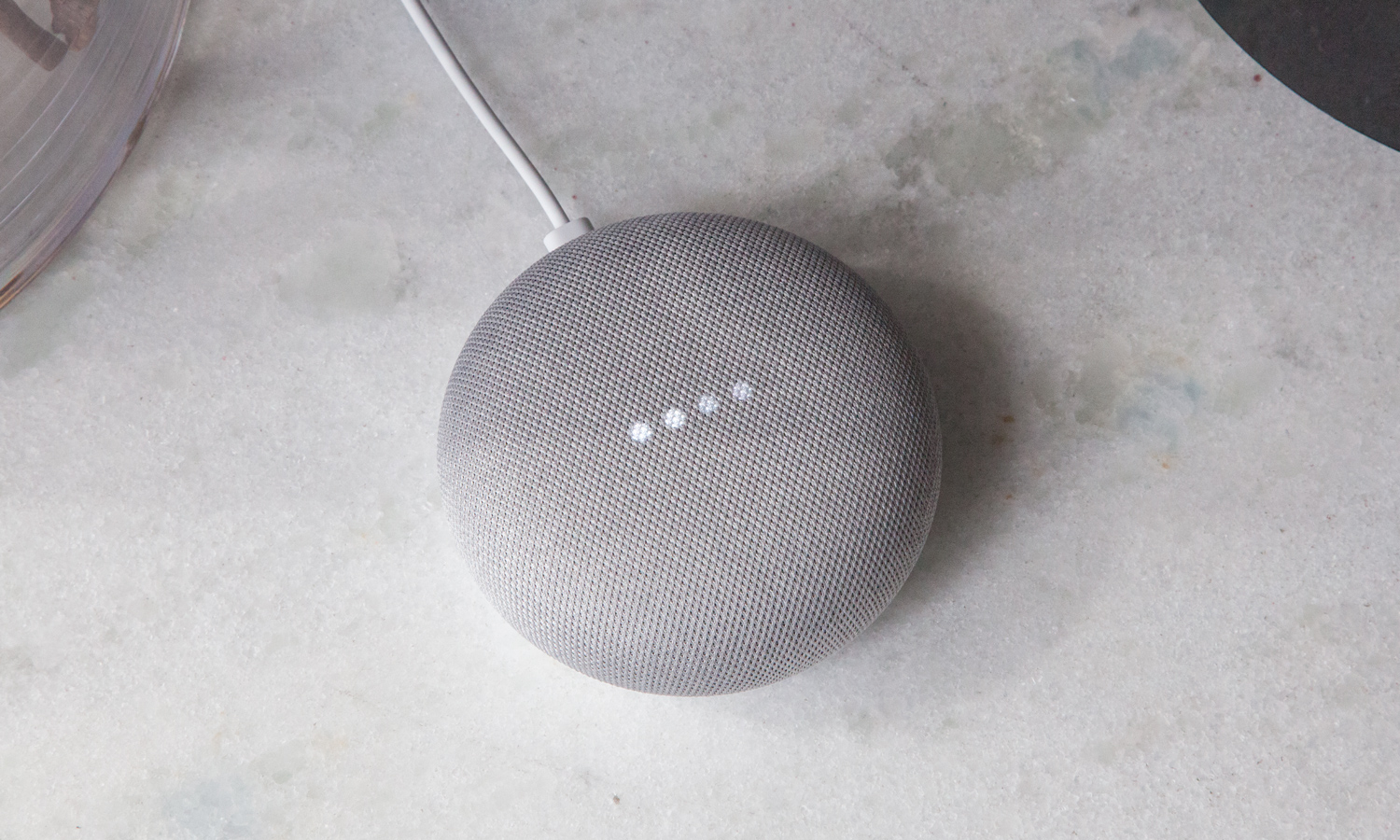
I'm not in love with my Google Home Mini, but I'm not kicking it out of the bedroom either. As for how long it stays plugged in, I'm not sure. Its tenure as my alarm clock might end soon if I keep having to yell at it in the morning. But unless I can find more ways to use this speaker, the odds of it moving to the shelf that holds my very rarely used Snapchat Spectacles will rise. I'll report back in a month to let you know where my Google Home Mini ends up.
Credit: Shaun Lucas/Tom's Guide
Sign up to get the BEST of Tom's Guide direct to your inbox.
Get instant access to breaking news, the hottest reviews, great deals and helpful tips.

Henry is a managing editor at Tom’s Guide covering streaming media, laptops and all things Apple, reviewing devices and services for the past seven years. Prior to joining Tom's Guide, he reviewed software and hardware for TechRadar Pro, and interviewed artists for Patek Philippe International Magazine. He's also covered the wild world of professional wrestling for Cageside Seats, interviewing athletes and other industry veterans.
-
arnilowfield All you have to do to make it shut up is say "Hey Google, mute" or "stop" . No need to look for a mute button. I understand you're not alone in being lazy about reading up on the commands to use, as a lot of people expect it to work the way they want without having to read anything. But just as with any electronic device, if you want to take full advantage of what it has to offer, you have to make a little effort in researching its capabilities and the instructions.Reply -
henrytcasey Reply20297415 said:All you have to do to make it shut up is say "Hey Google, mute" or "stop" . No need to look for a mute button. I understand you're not alone in being lazy about reading up on the commands to use, as a lot of people expect it to work the way they want without having to read anything. But just as with any electronic device, if you want to take full advantage of what it has to offer, you have to make a little effort in researching its capabilities and the instructions.
I get that, I just think this product needs a better on-boarding process in order to explain things. Not everyone is a manuals/research type, and the smart home is supposed to reduce, not increase, work, even in the short-term. -
richardfoleher I've had the fully grown Google Home for several months now and the whole family uses it with great ease and joy. It recognises all of our voices and plays all the music we want, first time every time. In the UK we can't quite order a dominoes or speak to virtual therapists like my friends over the pond, but I can add items to my shopping cart and then finish the payment via the stores app. our most commonly used phrases are turning Philips Hue lights on/off/different colours etc as well as firing up Netflix from on the big screen.Reply
Last week, we added a Google Home Mini for the bedroom, first order of the day, sign in the wife so it knows who she is. Easy as pie. From then on, it gives her all the same functionality upstairs as she had downstairs - no more yelling down the stairs to the main one. Best of all - we added the 2 devices in to a group, now when you play music, you can specify the individual device or both together.
We'll be adding 2 more (for the children's rooms) at Christmas. That way I never have to listen to another Taylor Swift song in my living room again ;) -
henrytcasey Reply20300270 said:I've had the fully grown Google Home for several months now and the whole family uses it with great ease and joy. It recognises all of our voices and plays all the music we want, first time every time. In the UK we can't quite order a dominoes or speak to virtual therapists like my friends over the pond, but I can add items to my shopping cart and then finish the payment via the stores app. our most commonly used phrases are turning Philips Hue lights on/off/different colours etc as well as firing up Netflix from on the big screen.
Last week, we added a Google Home Mini for the bedroom, first order of the day, sign in the wife so it knows who she is. Easy as pie. From then on, it gives her all the same functionality upstairs as she had downstairs - no more yelling down the stairs to the main one. Best of all - we added the 2 devices in to a group, now when you play music, you can specify the individual device or both together.
We'll be adding 2 more (for the children's rooms) at Christmas. That way I never have to listen to another Taylor Swift song in my living room again ;)
Stories like that, man, congrats. You're winning this thing.
